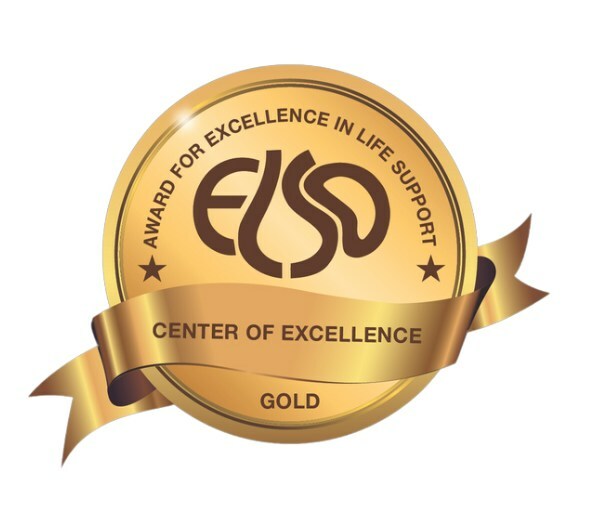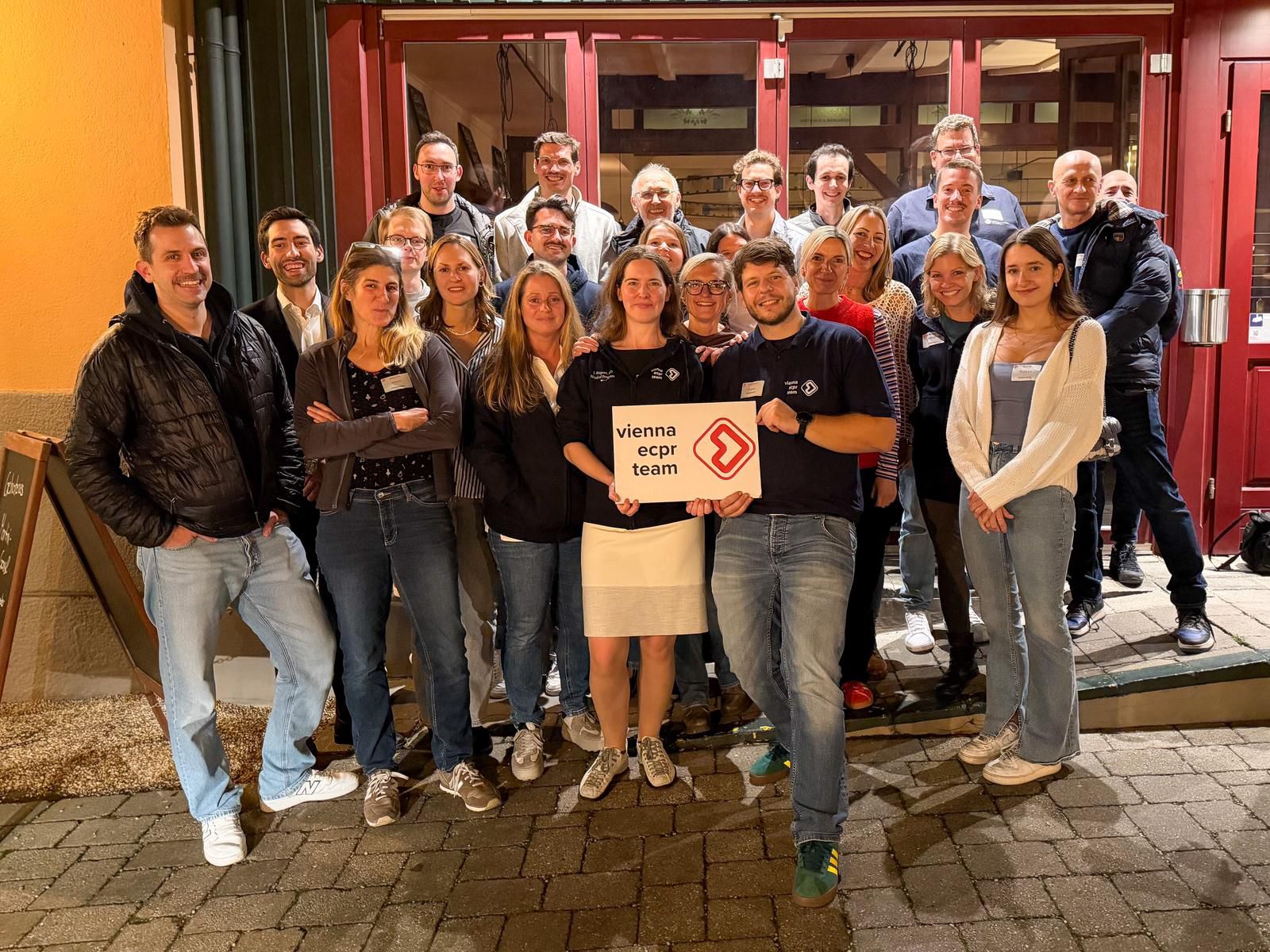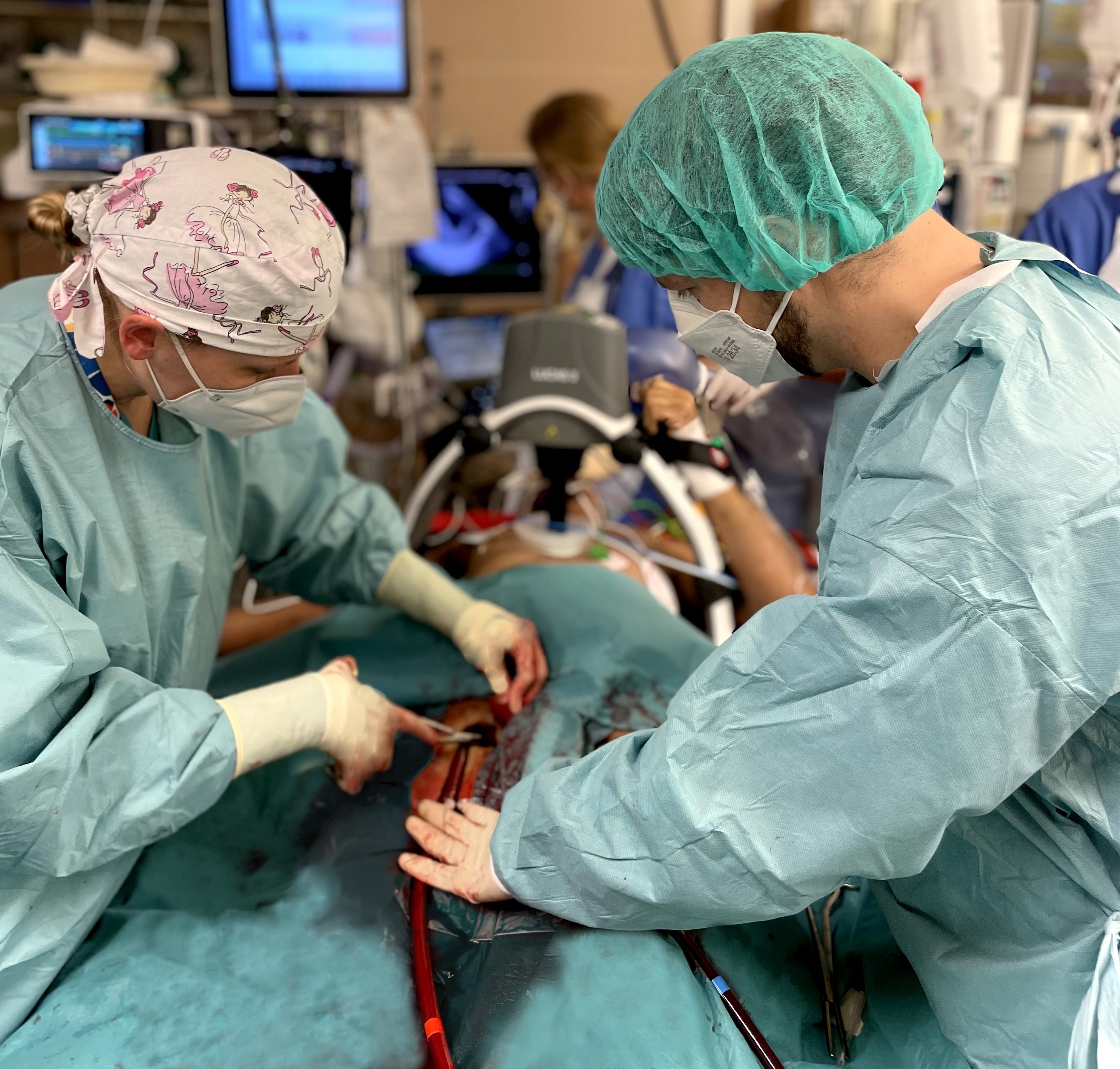Extracorporeal resuscitation (eCPR) at the Department of Emergency Medicine
The Department of Emergency Medicine treats between 60 and 70 patients with refractory cardiac arrest annually using eCPR
Cardiopulmonary resuscitation is as an essential first aid skill, saving countless lives worldwide from cardiac arrest every year. The basic principles of cardiopulmonary resuscitation consist of chest compressions, ventilations, and defibrillation, and did not change much over the last decades. Chances for surviving a cardiac arrest are dependent on many factors. Some of the most important factors are recognizing the cardiac arrest and calling for help, immediately starting cardiopulmonary resuscitation with high quality chest compressions, and administering early defibrillations to rapidly achieve return of spontaneous circulation.
However, in some patients, cardiopulmonary resuscitation with chest compressions, ventilation, and defibrillation fails to restore cardiac function and spontaneous circulation.
In some of these patients, extracorporeal resuscitation (eCPR) is an option – a resuscitation strategy that has been increasingly researched and established in recent years. ECPR uses a machine for extracorporeal membrane oxygenation (ECMO) to temporarily replace cardiopulmonary function with extracorporeal circulation. ECMO technology has been successfully used for many years in heart surgery, or life-threatening pulmonary and cardiac failure. The functional principle of ECMO is to drain the patient’s blood via large-bore cannulas into the ECMO machine, where the blood is oxygenated and then pumped back into the body. eCPR uses this “pumping” and “oxygenation” functions of ECMO to restore circulation and sustain oxygenation to vital organs. This temporary extracorporeal circulation allows for the stabilization of the patient, providing time to treat the underlying cause of the cardiac arrest, such as a severe myocardial infarction. However, eCPR poses major challenges for the entire team and can only be used in selected cases. A chain of favourable circumstances are required to sucessfully treat a patient with eCPR, including recognition of the cardiac arrest, immediate start of cardiopulmonary resuscitation by first responders, and time-optimized patient management by the EMS and in-hospital crews.

The Department of Emergency Medicine has been treating patients with ECPR since 1992. Today, the “Vienna ECPR Center“ treats between 60 and 70 patients with refractory cardiac arrest annually using ECPR.
Researching and optimizing the application of ECPR are central tasks of the “Vienna ECPR Research” group, particularly through collaborations with European and international ECPR centers.
Program Directors
- Dr. Ingrid Anna Maria Magnet
Tel.: +43 (0)1 40400-39535
E-Mail: ingrid.magnet@meduniwien.ac.at
- Priv.-Doz.Dr. Michael Poppe
Tel.: +43 (0)1 40400-39535
E-Mail: michael.poppe@meduniwien.ac.at
Pincast
The “Perspective: Interdisciplinary Emergency Medicine” podcast, created and hosted by Dr. Tobias Becker, is a monthly audio publication designed for continuing education for those passionate about emergency medicine. Click here to visit the Homepage.
Distinguished Guests at the University Department of Emergency Medicine!
We had the pleasure of welcoming Mathias Gatterbauer, Field Supervisor (FISU) of Berufsrettung Wien, along with well-known German emergency services influencer Luis Teichmann (5_sprechwunsch).
As part of this exciting exchange, we had the opportunity to present our eCPR program – a forward-thinking project that impressively demonstrates how modern emergency medicine and prehospital care can go hand in hand.
The resulting video offers fascinating insights – we hope you enjoy watching it!
RESponse Notfallmedizin
The RESponse Emergency Medicine Podcast by Berufsrettung Wien is an expert-led discussion exploring the fascinating world of prehospital emergency medicine and its interdisciplinary interfaces.
Click here to visit the Homepage
- Episode #5
Three Shocks and Go - Episode #8
Rhythm Check Three - A2BCDE3!

Gold “Center of Excellence” – Vienna eCPR Program
The Vienna eCPR Program is internationally recognized as a leading center for extracorporeal cardiopulmonary resuscitation and has been awarded Gold “Center of Excellence” certification by the Extracorporeal Life Support Organization (ELSO). This distinction reflects outstanding quality in structure, processes, training, and clinical outcomes in extracorporeal resuscitation.
The Department of Emergency Medicine at MedUni Vienna has been one of the world’s pioneering and leading centers for extracorporeal cardiopulmonary resuscitation (eCPR) for many years. Using this highly specialized therapy, approximately 70 patients in cardiac arrest are treated each year with extracorporeal membrane oxygenation (ECMO) when conventional resuscitation efforts fail.
eCPR at the Vienna eCPR Center
In eCPR, an extracorporeal circulation is established via large-bore vascular cannulas to temporarily replace heart and lung function and maintain oxygen delivery to vital organs. This allows blood pressure to be stabilized and valuable time to identify and treat the underlying cause of cardiac arrest, such as extensive myocardial infarction. Success depends on an uninterrupted chain of care: early recognition of cardiac arrest, immediate bystander CPR, rapid prehospital management, and a highly trained in-hospital eCPR team. Only carefully selected patients meet the strict criteria for eCPR, as this therapy requires substantial personnel, logistical, and technical resources.
Longstanding expertise and international network
The Department of Emergency Medicine has been performing eCPR since 1992 and, under the label “Vienna eCPR Center,” has gained a strong reputation across Europe through high case volumes and standardized treatment pathways. The “Vienna eCPR Research” group continuously investigates indications, workflows, and outcomes, publishing its findings in high-impact scientific journals. Close collaboration with European and international eCPR centers helps to further refine concepts, optimize patient selection and treatment pathways, and continuously improve quality of care. Numerous scientific contributions from Vienna have played a key role in establishing eCPR as an evidence-based treatment option for selected patients in cardiac arrest.
ELSO Gold certification from 2026
Since 1 January 2026, the Department of Emergency Medicine at MedUni Vienna has additionally been certified as a Gold Center by the Extracorporeal Life Support Organization (ELSO), the international umbrella organization for ECMO and extracorporeal life support. This award confirms the highest standards in structure, processes, education, and outcomes of extracorporeal resuscitation at the Vienna eCPR Program. For patients, this means cutting-edge care based on the latest scientific evidence at one of the world’s leading centers for eCPR.


2nd Vienna eCPR Team Meeting with eCPR Survivors
For the second time, the University Department of Emergency Medicine organized a meeting with a very special highlight: a get-together for people who were successfully resuscitated thanks to extracorporeal cardiopulmonary resuscitation (eCPR). The focus was on personal exchange between the former patients and the entire treatment team.
In the relaxed atmosphere of "Plachuttas Grünspan," participants could learn more about the life-saving eCPR treatment. An ECMO console set up on site provided an additional vivid insight into the technology used.
In total, 16 survivors along with their relatives had the opportunity to meet representatives from the Medical University of Vienna, AKH Vienna, Professional Rescue Vienna, the police, and the First Responder system – all those involved in their treatment.
For us as a team, it is particularly moving to see how patients who, after resuscitation and prolonged intensive care treatment, have found their way back to life, laugh, talk, and celebrate together with us. These encounters give us motivation and energy to further expand the eCPR program.
The eCPR program of the University Department of Emergency Medicine has been continuously developed in recent years. More and more patients receive this specialized therapy. In 2025 alone, over 70 people with therapy-refractory cardiac arrest have already been treated using eCPR.
This success is only possible thanks to a dedicated team that works daily to improve processes and thus help even more people. Close collaboration with Professional Rescue Vienna, cardiac surgery, cardiotechnology, intensive care units of the Medical University of Vienna, and all other partners is a key pillar in this effort.
Special thanks go to Getinge, Fresenius, and the Austrian Association of Emergency Medicine (AAEM) for their valuable support in making this meeting possible.library
We are already looking forward to further meetings with people who were resuscitated thanks to eCPR – and to continued collaboration with all those involved in the Vienna eCPR program.
News eCPR
Vienna ECPR Team: Research meeting and 1st meeting with ECPR patients at Heurigen Wolff
On September 27, we were delighted to celebrate our first meeting with people who have been successfully resuscitated at our clinic thanks to extracorporeal resuscitation (ECPR).
In personal discussions, our former patients had the opportunity to learn more about this life-saving treatment, the ECPR method and the associated ECMO technology. However, the exchange with all those involved in the Vienna ECPR program, both from the rescue service and from the University Clinic for Emergency Medicine, was particularly valuable. The meeting offered moving and emotional moments that gave us strength, gratitude and a good portion of motivation for the future.
The ECPR program at the Department of Emergency Medicine has continued to develop over the past few years and has overcome many hurdles. This is reflected, among other things, in a steady increase in the number of patients receiving this special therapy. In 2023, we were able to treat 63 patients in refractory circulatory arrest using ECPR.
This is thanks to a dedicated team that is constantly working to improve processes and thus help even more people in this exceptional situation. The close cooperation with the Vienna Professional Rescue Service, Cardiac Surgery, Cardio-Technology and the intensive care units of the Medical University of Vienna and all partners in the ECPR program is a key to success.
Our special thanks go to Getinge and the Austrian Association for Emergency Medicine (AAEM) for their valuable support.
We are already looking forward to many more meetings with people who can be resuscitated thanks to ECPR and all employees in the Vienna ECPR program.
- Extracorporeal Cardiopulmonary Resuscitation: Outcomes Improve with Center Experience. Magnet I, Behringer W, Eibensteiner F, Ettl F, Grafeneder J, Heinz G, Holzer M, Krammel M, Lobmeyr E, Losert H, Müller M, Nürnberger A, Riebandt J, Schriefl C, Staudinger T, Stommel AM, Testori C, Zauner C, Zeiner-Schatzl A, Poppe M, Ann Emerg Med. (2024)
- Extrakorporale Reanimation: das Wiener Modell. Poppe M, Magnet I, Krammel M; Anästhesie Nachrichten (2023)
- Extracorporeal resuscitation-criteria, prerequisites, outcome: A reality check. Magnet I, Poppe M; Med Klin Intensivmed Notfmed (2022)
- Rhythm check three - A2BCDE3! - A new acronym to select eligible patients for extracorporeal cardiopulmonary resuscitation (eCPR). Mueller M, Magnet IAM, Mitteregger T, Krammel M., Poppe M; Resuscitation (2022)
- Extracorporeal cardiopulmonary resuscitation at the emergency department: A retrospective patient selection evaluation. Poppe M, Schriefl C, Steinacher A, Clodi C, Warenits AM, Nürnberger A, Hubner P, Holzer M, Horvat J, Wiedemann D, Weiser C; European Journal of Anaesthesiology (2019)
- The incidence of "load & go" out-of-hospital-cardiac arrest candidates for emergency department utilization of emergency-extracorporeal life support. A one-year review. Poppe M, Weiser C, Holzer M, Sulzgruber P, Datler P, Keferböck M, Zeiner S, Lobmeyr E, van Tulder R, Ziegler A, Glück H, Meixner M, Schrattenbacher G, Maszar H, Zajicek A, Sterz F, Schober A; Resuscitation (2015)



